Botanical jewels: Sapphire towers in flower at Mount Tomah
An extraordinary display of rare bright turquoise blooms are in flower for the next few weeks at the Blue Mountains Botanic Garden Mount Tomah.
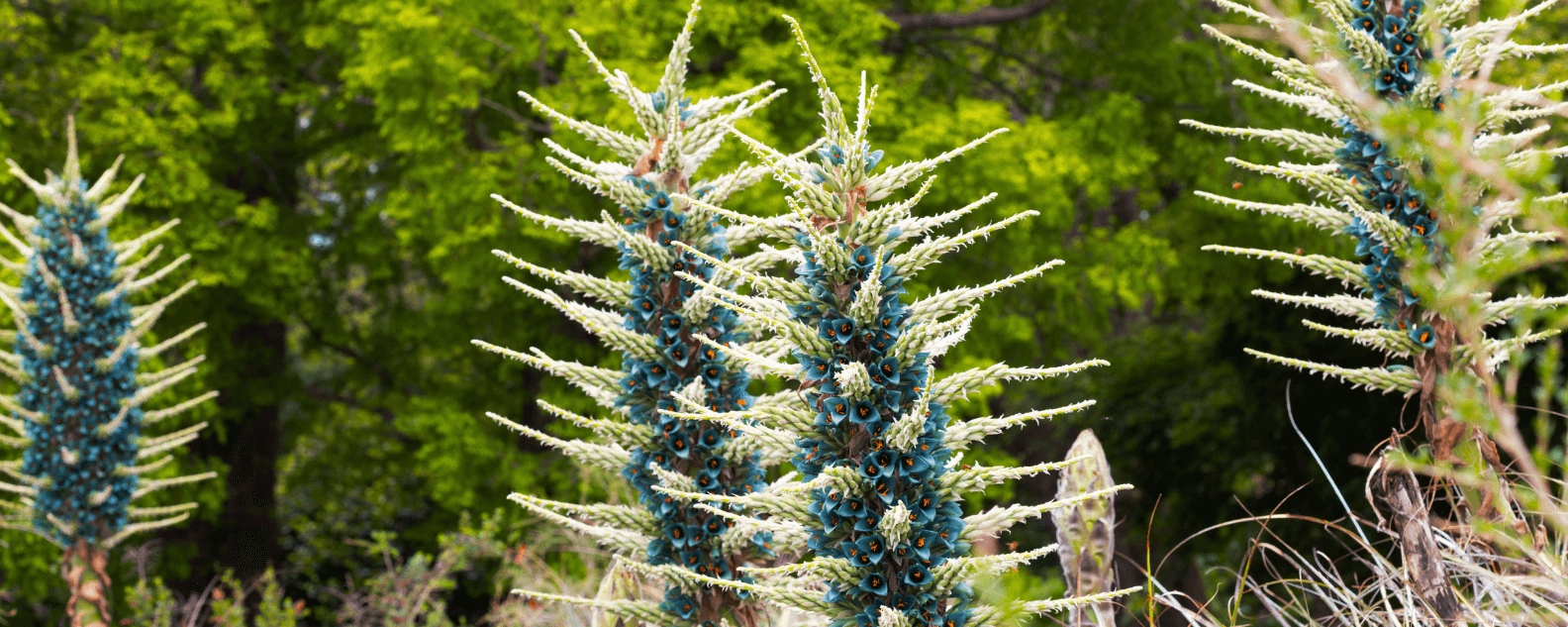
Hailing from the tall mountain ranges of Chile, this prickly pineapple isn’t built like any ordinary cool climate plant.
Puya origin story
The exotic Puya alpestris ssp. zeollneri, colloquially known as ‘sapphire towers’ hail from the cold Chilean terrain of the Andes Mountains that run along South America’s Western side.
Ornamental Gardens and Nursery Supervisor, Marion Whitehead, says the seeds of the Puya alpestris ssp. zeollneri at the Botanic Garden were collected from the wilds of Chile in the late 1980s by our botanists.
“They are shade of blue I’ve never seen anywhere else in nature; this otherworldly blue contrasted with the bright orange of their pollen and their thick waxy flowers make them the most unique flower in the Garden” - Marion Whitehead
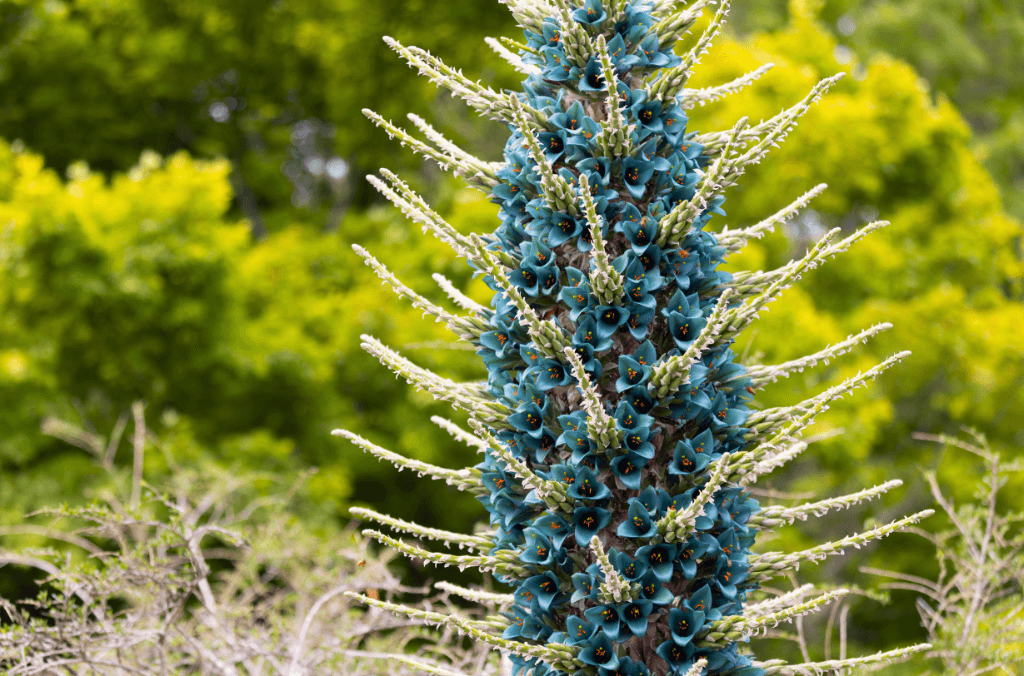
Puya alpestris ssp. zeollneri plant in the Rock Garden, Blue Mountains Botanic Garden 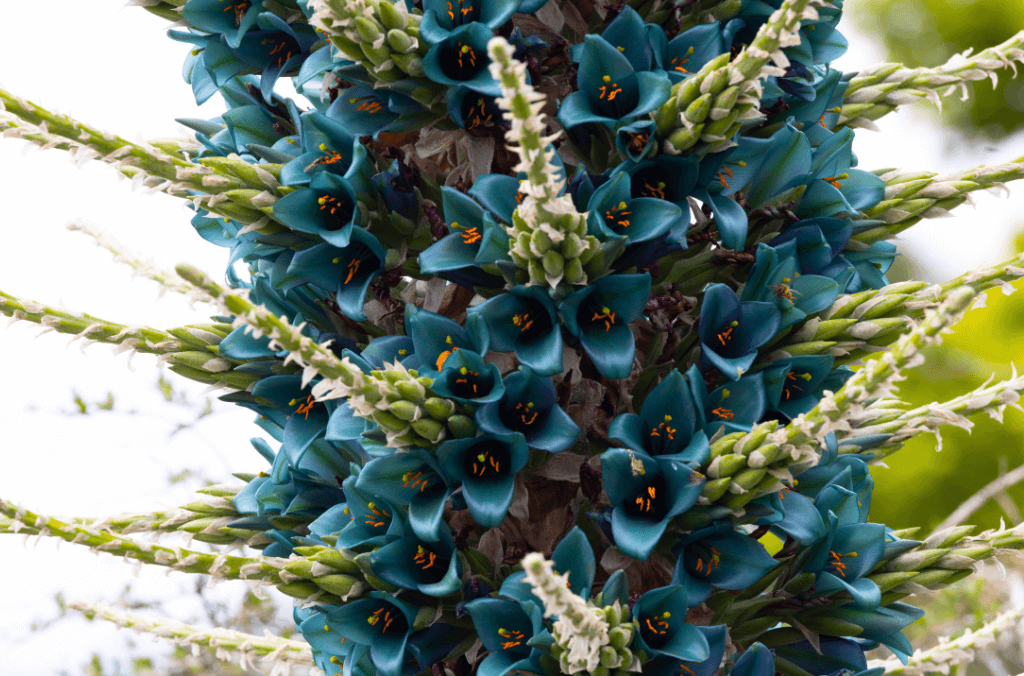
Puya alpestris ssp. zeollneri plant in the Rock Garden, Blue Mountains Botanic Garden 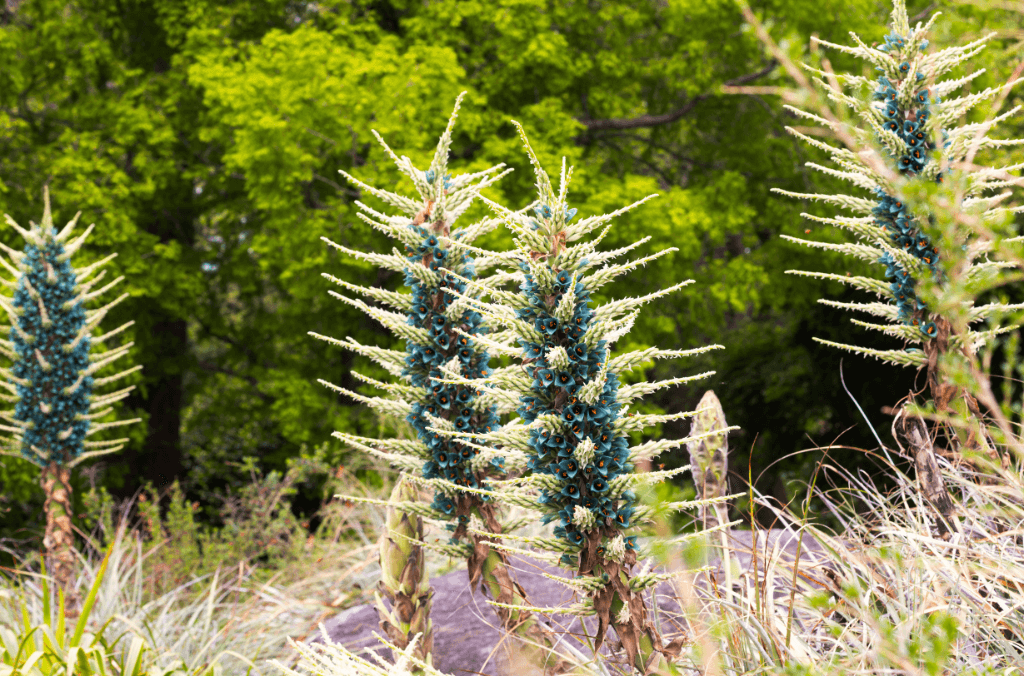
Puya alpestris ssp. zeollneri plant in the Rock Garden, Blue Mountains Botanic Garden 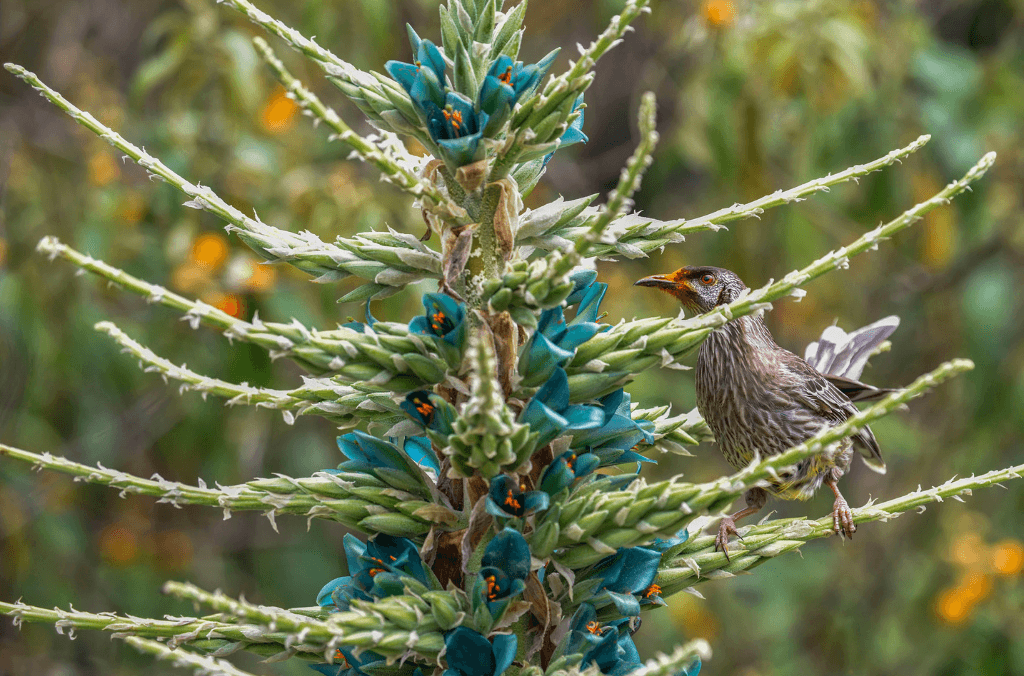
Native bird enjoying the Puya nectar
The Puya alpestris ssp. zeollneri is naturally found above 2000 metres in altitude - that's almost double the elevation of Mount Tomah. This cold-blooded relative of the pineapple isn't naturally suited to the Blue Mountains climate, but horticulturalists at Mount Tomah created a specially built environment around the late 1990s within The Rock Gardens, entrenched with rich basalt soil and rocky substrate to encourage optimal growth.
New Puya species in living collection
Since then, the Puya living collection has grown up to 15 different species, with some that can take up to seven years to come into flower - every year is a botanical surprise.
For the last couple of years, the Puyas have put on an amazing extended display that has seen around 40 flower spikes that can grow up to two metres long!
Some of the new additions to the collection include Puya raimondii, the largest Puya with flower spikes up to a whopping 15 metres. The Puya raimondii only flowers once in its 85-year life span; after flowering, the plant dies.
The horticulture team also introduced a new one-of-a-kind Puya species in 2023 called Puya textoragicolae from Peru, which is now flowering for the first time ever. This new species looks a little different to its blue-hued plant partners, with a bright fire red exterior.
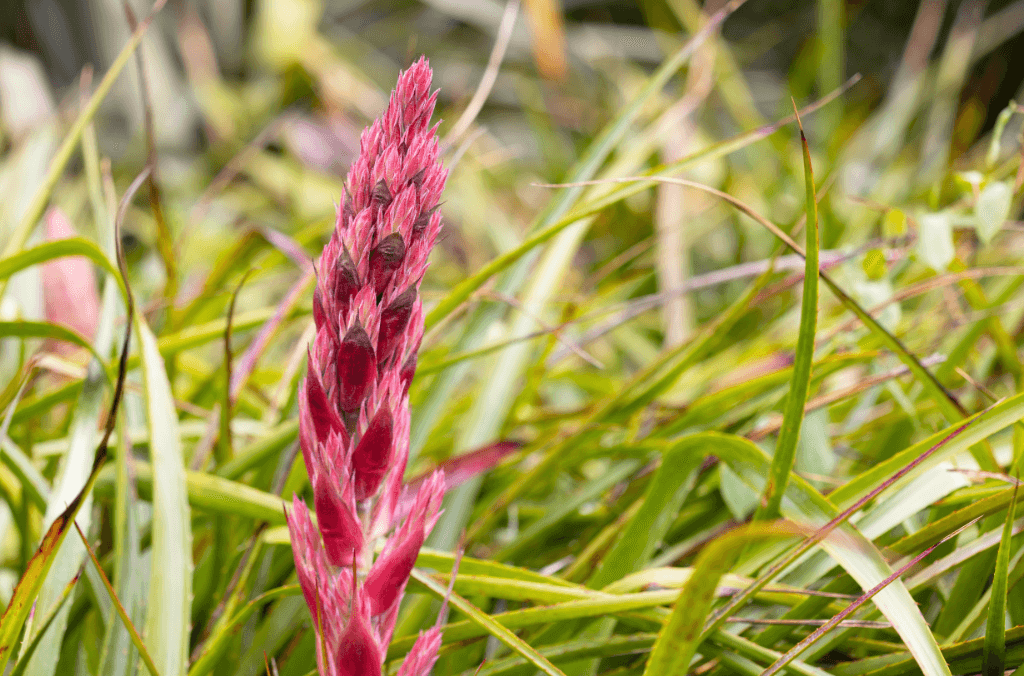
Puya textoragicolae from Peru in the Rock Garden at the Blue Mountains Botanic Garden Mount Tomah
Want to see the puya in flower?
Plan a visit to the Blue Mountains Botanic Garden Mount Tomah in November to see the stunning Puyas in bloom. The eucalyptus blue haze that gives the Blue Mountains their name is the perfect backdrop for this display.
They will be in bloom until the end of November and sometimes may extend into mid-December, depending on the weather.
Significance of Puyas
It’s not just the human visitors to the Botanic Garden who are enamoured by these towering wonders: local Honeyeaters, Red Wattlebirds, and even the shy Eastern Spinebills make an appearance to feast on the Puyas' rich nectar every year when they come into flower.
Despite our Puyas not being native to Australia, they are still a significant part of the Blue Mountains Living Collection, as one of the largest and most unusual alpine plants on display that bring people from all around Sydney to see them come into flower each year.
Although there are 15 Puya species in the living collection, only three species have come into flower, meaning 12 Puya varieties are yet to show their dramatic alien-like flowers to the world.
Since many of the species are still in their seedling stage and are not native to Australia, people have rumoured they can spread their seed in the native bushland and become weeds.
While this can be true, the Horticulture team have yet to see a Puya seedling come up within, or outside, the Botanic Garden – meaning they don’t germinate readily in the Blue Mountains environment and cannot become weedy unless they spread by seed, which is extremely rare.
Luckily, this bromeliad requires tender care to get them to flower (and seed). Without this daily care and watering in the lead up to flowering, they won’t produce seed and will never become a weed. It's down to the careful work of the Horticulture team that these plants flower each year for visitors to see.
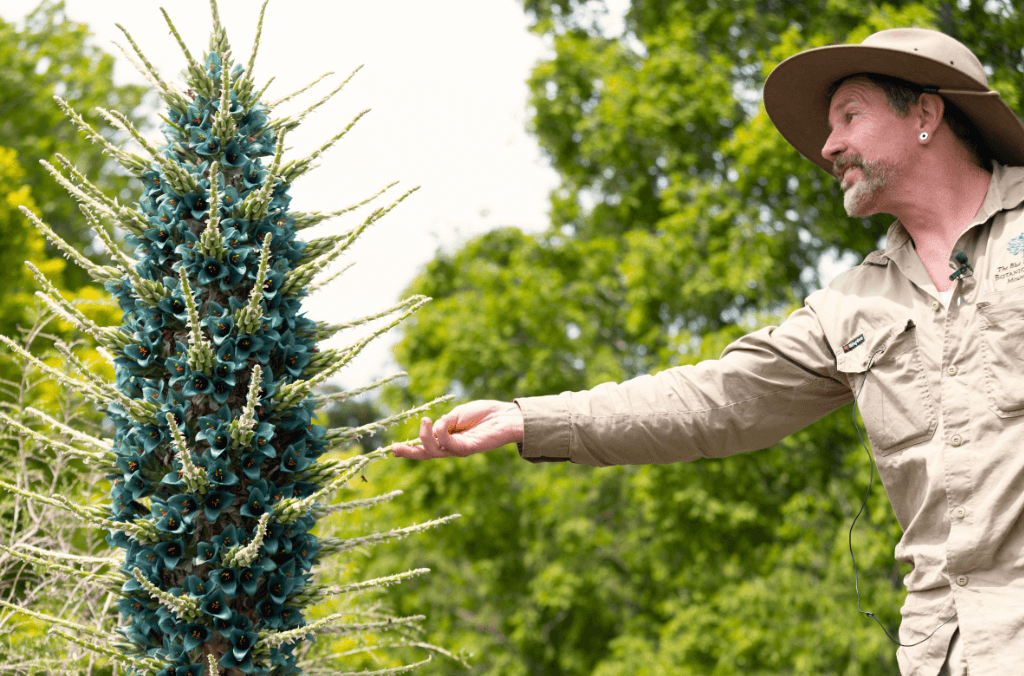
Senior Horticulturalist, Mat Murray at the Blue Mountains Botanic Garden with the Puya alpestris ssp. zeollneri.
Share your images and tag @BotanicSydney
Share your Puya images at the Rock Garden, Blue Mountains Botanic Garden with us on social media and tag @BotanicSydney.
Related stories
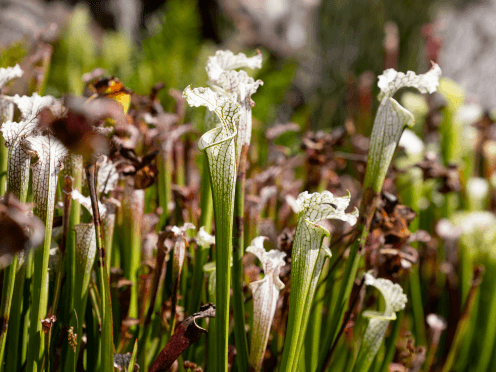
Three carnivorous plants to care for during the cooler seasons.

Three carnivorous plants to care for during the cooler seasons.
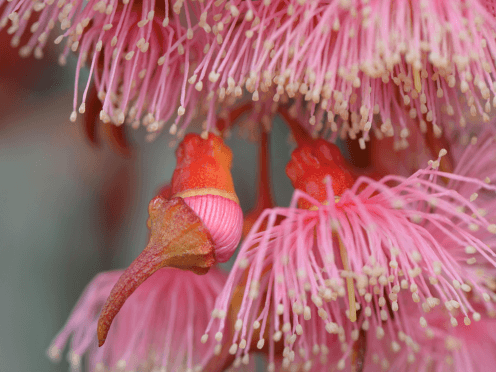
Eucalypts or gum trees are one of Australia’s most iconic plants. The scent of their oil alone evokes the bushland.